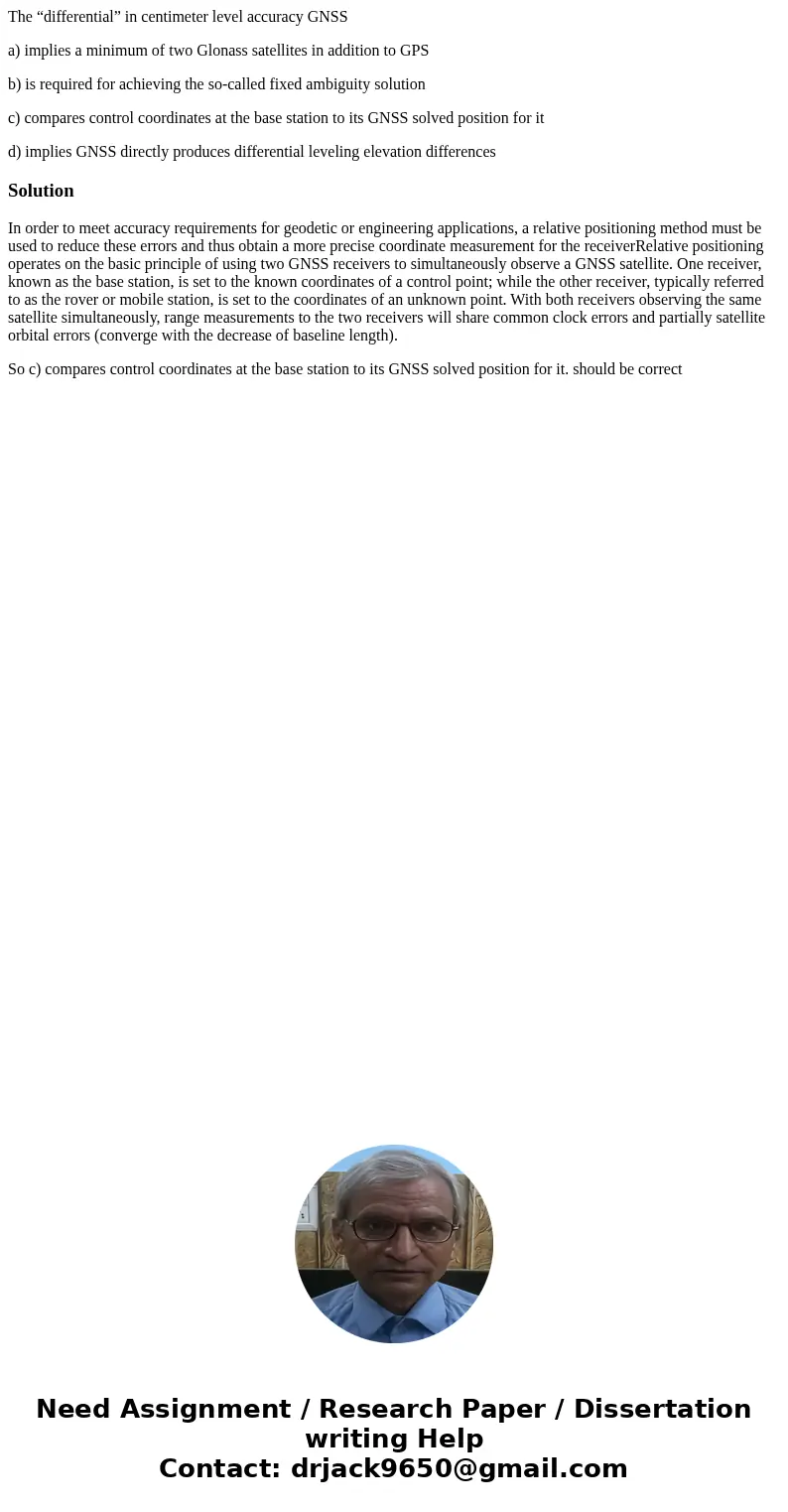The differential in centimeter level accuracy GNSS a implies
The “differential” in centimeter level accuracy GNSS
a) implies a minimum of two Glonass satellites in addition to GPS
b) is required for achieving the so-called fixed ambiguity solution
c) compares control coordinates at the base station to its GNSS solved position for it
d) implies GNSS directly produces differential leveling elevation differences
Solution
In order to meet accuracy requirements for geodetic or engineering applications, a relative positioning method must be used to reduce these errors and thus obtain a more precise coordinate measurement for the receiverRelative positioning operates on the basic principle of using two GNSS receivers to simultaneously observe a GNSS satellite. One receiver, known as the base station, is set to the known coordinates of a control point; while the other receiver, typically referred to as the rover or mobile station, is set to the coordinates of an unknown point. With both receivers observing the same satellite simultaneously, range measurements to the two receivers will share common clock errors and partially satellite orbital errors (converge with the decrease of baseline length).
So c) compares control coordinates at the base station to its GNSS solved position for it. should be correct

 Homework Sourse
Homework Sourse